Angler grinders are undoubtedly versatile tools but can be dangerous if not used properly. Compared to a jigsaw or other hacksaw, angle grinders can cut metal quickly, but they also pose the risk of causing severe injury. Before even touching an angle grinder, you must know the proper technique and safety measures to minimize this risk. In this article, I will tell you how to use an angle grinder to cut metal properly. So, let’s do this!
What is an Angle Grinder?

An angle grinder, side grinder, or disc grinder is a handheld power tool designed for various applications, including cutting, grinding, polishing, and sanding. It’s equipped with a powerful motor with higher RPM. We can swap out an angle grinder’s disk depending on the task’s requirements, such as cutting or grinding.
Common Uses of an Angle Grinder
Angle grinders are commonly used for:
- Cutting metal, tiles, and concrete
- Polishing surfaces
- Grinding and sharpening tools
- Removing rust or paint
Types of Angle Grinders
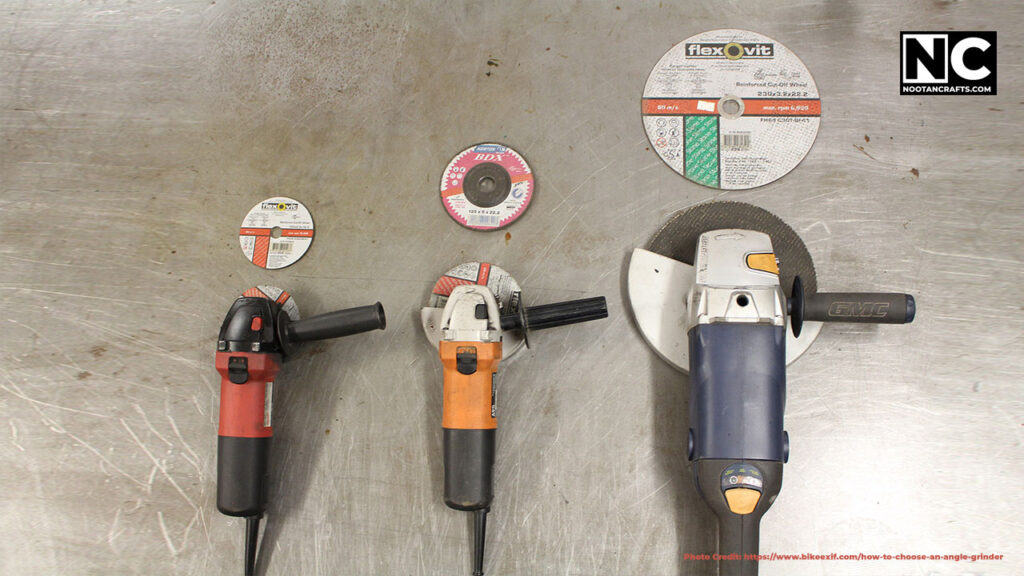
Angle grinders are available in different sizes, typically ranging from 4 to 9 inches. The size refers to the diameter of the disc that an angle grinder can support. Smaller angle grinders are popular because they are easy to handle and more versatile. On the other hand, larger angle grinders are more powerful and the perfect choice for heavy-duty tasks.
Choosing the Right Angle Grinder for Cutting Metal
Selecting the right angler grinder according to your needs is crucial because it can make or break your project.
Factors to Consider
Power and Speed
Angle grinders with higher power and speed allow quick cutting but require more control.
Disc Size
4-inch or 5-inch discs are usually ideal for metal cutting and grinding. However, larger disks would be much better for bigger and hefty projects.
Safety Features
Look for features like adjustable guards, safety switches (automatic cut-off), vibration-reducing handles, and anti-kickback clutch.
Safety Precautions When Using an Angle Grinder
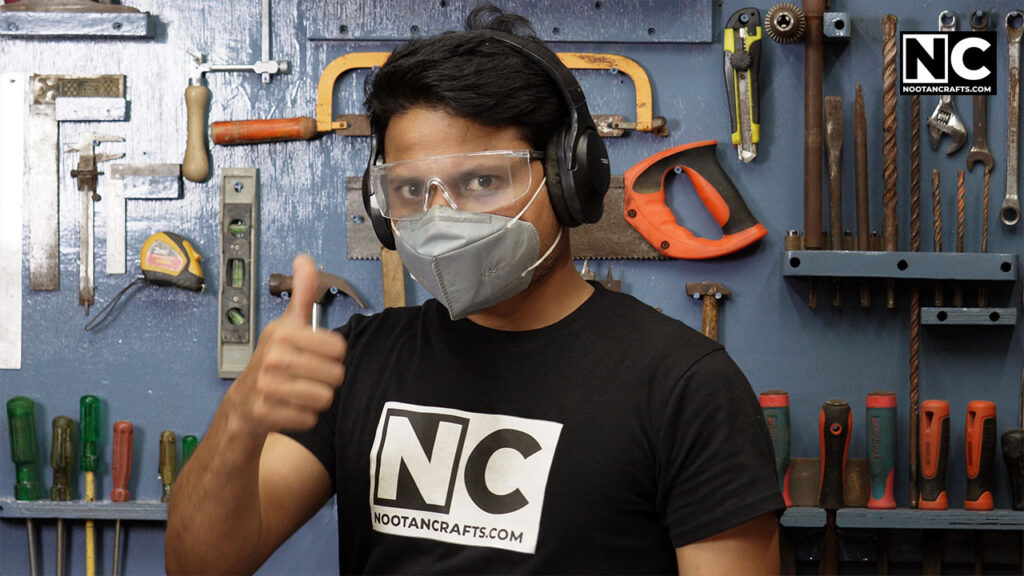
Safety should always be your utmost priority when working with any power tools, including an angle grinder. Using a power tool without PPE is an open invitation to accidents.
Personal Protective Equipment (PPE)
You must always wear these equipment when using an angle grinder:
- Safety goggles
- Gloves
- Ear protection
- Long sleeves and pants
Workspace Preparation
- Make sure your workspace is well-ventilated and clutter-free.
- Keep flammable materials away, such as spray paints, paper, or plastic cables, from the area.
- Secure the metal piece to a stable surface or clamp it in a vice to avoid unnecessary movements while working on it.
Safely Handling a Grinder When Working with Metal
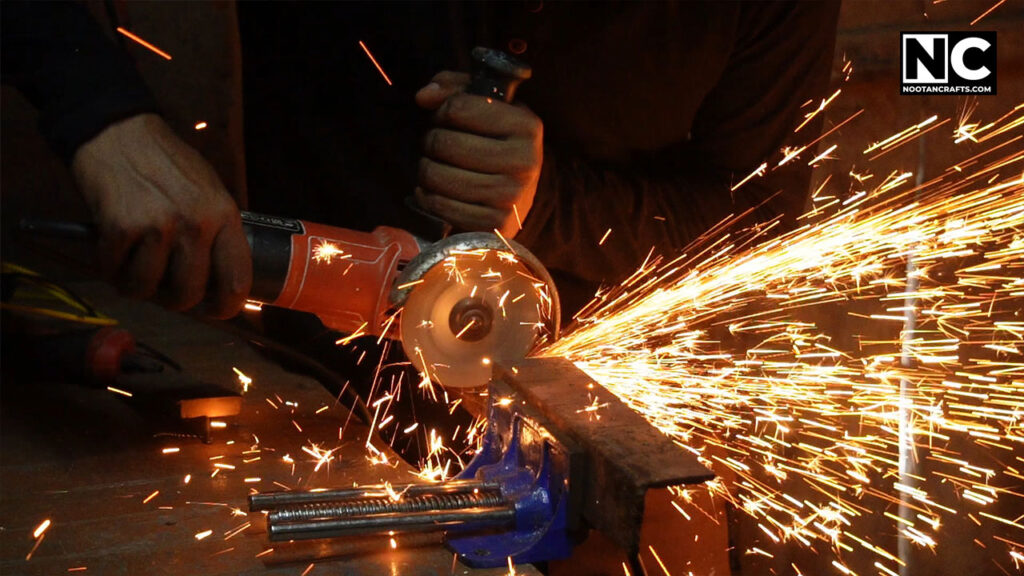
- Always hold the grinder with both hands. It will help you control it more effectively, especially when grinding.
- Keep a firm grip on the handle to prevent it from slipping out of your hand. Always be prepared for sudden jerks or kickbacks.
- Never force the grinder—let the disc do the work. It is one of the significant reasons for kickback and disk splintering.
Selecting the Right Disc for Metal Cutting
Selecting the correct metal disk for efficient and safe metal cutting is crucial.
Types of Cutting Discs
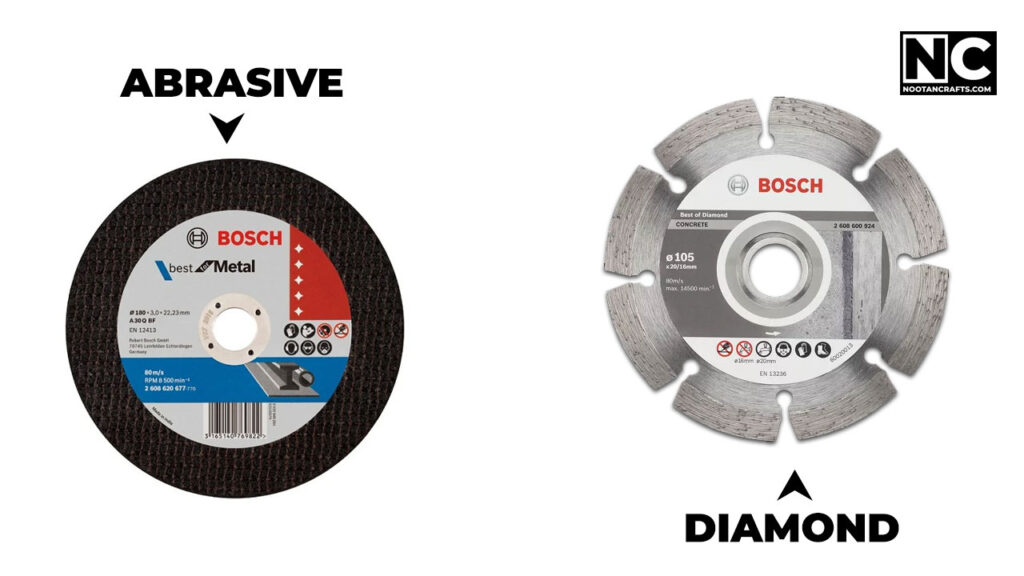
Abrasive Discs
These are common for cutting metal and are usually made from materials like aluminum oxide.
Abrasive disks are budget-friendly and effective for general metal cutting, especially for thinner metals. However, abrasive disks wear out faster and produce more dust and debris.
Diamond Discs
These discs are more durable and can last significantly longer—up to 30 times the lifespan of abrasive discs. They are especially effective for cutting thicker metals and producing less dust; however, their cutting rate is lower compared to abrasive disks.
Diamond discs are more expensive, but in the long run, their longevity can make them more cost-effective.
How to Cut Metal With an Angle Grinder – Step-By-Step Guide
Now, let’s get into the nitty-gritty of how to use an angle grinder to cut metal.
Setting Up the Angle Grinder
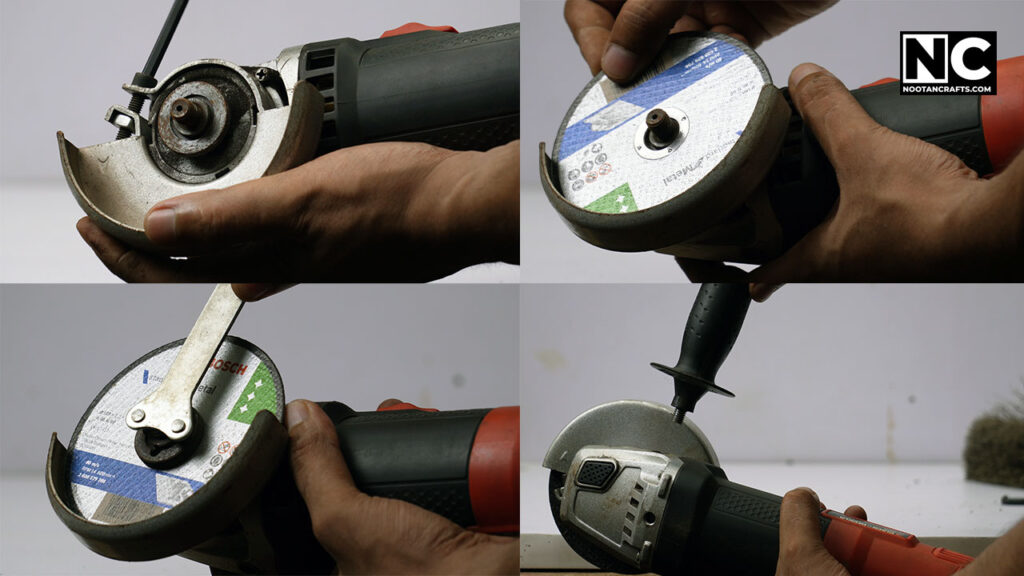
- Make sure the angle grinder isn’t connected to the main. If it’s a cordless model, remove the battery for safety.
- Attach the appropriate cutting disc according to the material’s nature.
- Now adjust the guard to protect against sparks and debris and change the handle position if necessary.
- Finally, check that all the parts are securely fastened.
Making the Cut
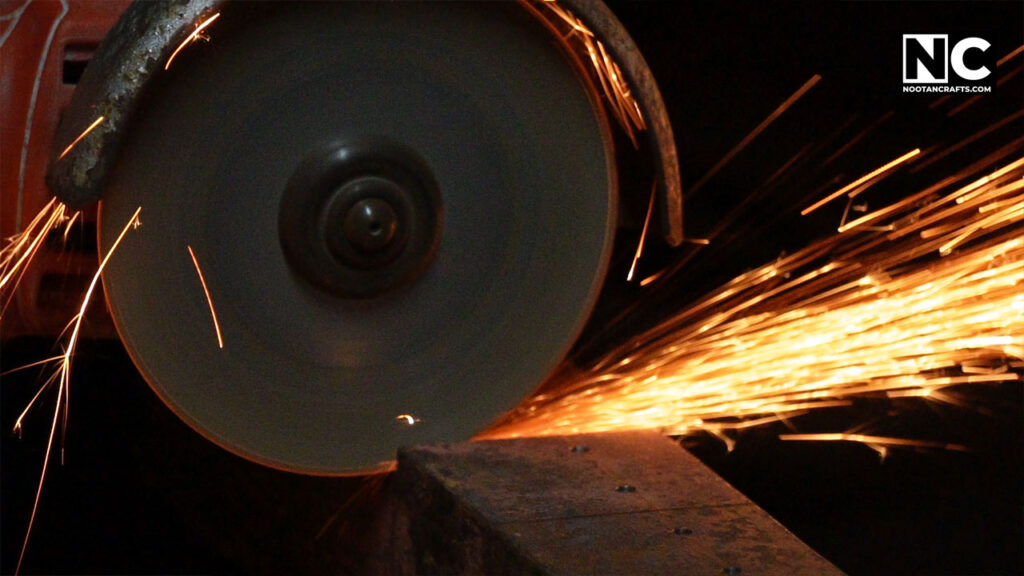
Starting the Cut: Align the disc with the cut line and press the trigger to start the grinder.
Maintaining a Steady Hand:
- Move the grinder along the cut line smoothly and steadily.
- Don’t apply much force.
- Let the disk do its job.
Finishing the Cut: Slow down as you approach the end of the cut to avoid overcutting.
Common Mistakes to Avoid
Using the Wrong Disc: Don’t use a disk that isn’t designed to cut metal. It can cause an accident or injury.
Applying Too Much Pressure: Let the grinder do the work; excessive force can damage the blade, especially the abrasive ones. Remember, the broken pieces thrown at a higher RPM could be dangerous.
Ignoring Safety Measures: Never overlook the importance of PPE or safety checks. Remember, you’re playing with a deadly toy, so precaution is better than cure.
Maintaining Your Angle Grinder
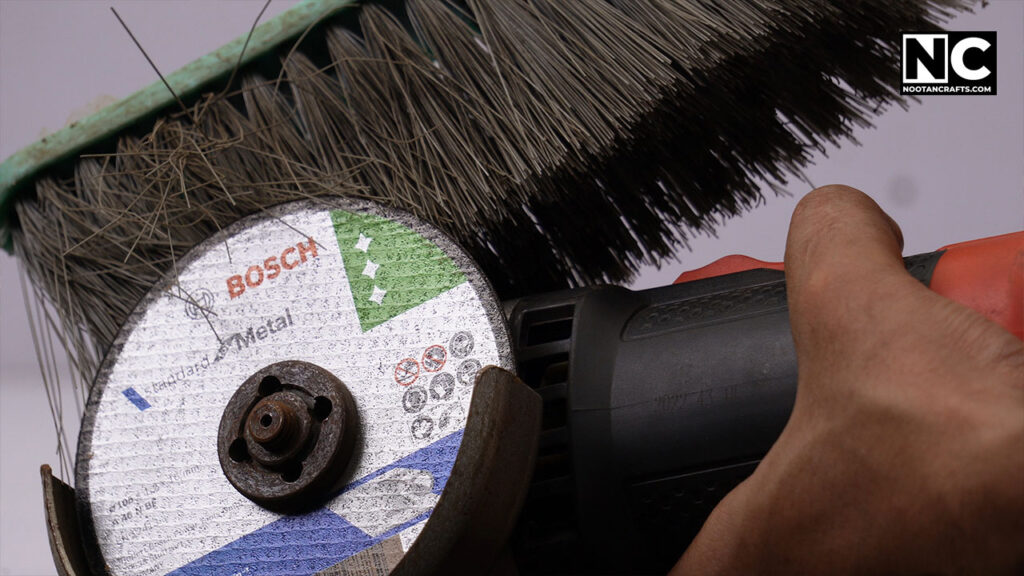
Taking care of your angle grinder ensures its longevity and efficiency and is crucial for safety.
Regular Cleaning and Inspection
- Make a habit of cleaning the angle grinder after each use.
- Inspect the disc and tool for wear and damage.
- Change discs when they become too worn to maintain cutting efficiency.
- Immediately replace the broken disks, which can pose a risk to the safety.
- Follow the manufacturer’s guidelines for disc replacement. However,
Storing the Angle Grinder Properly
- Like most power tools, store your angle grinder in a dry, safe place.
- Most importantly, it should be kept out of children’s reach.
General FAQs
Keep your angle grinder clean, monitor wear and tear, and always replace worn-out and broken disks. Most importantly, follow the manufacturer’s maintenance guidelines.
Yes, with the appropriate disc, an angle grinder can turn into a tile, concrete, or wood-cutting machine. However, you have been warned, especially when working with wood, not to put a regular wood-cutting blade in an angle grinder. It could be deadly.
Immediately turn off the angle grinder and let it cool down. Continuing to use it can damage the device and cause accidents.
First, mark your cut line clearly and secure the metal with a clamp or a vice. Keep your hand steady, and never force the grinder while cutting.
You can use tools like hacksaws, jigsaws, metal cutting shears, or plasma cutters. However, not every tool can be used to cut all the materials.
First, secure it with a vise or clamp. Use an abrasive or diamond disk to mark the cutting line. Slowly move the grinder along the line while maintaining consistent pressure until the rebar is cut through.
Secure the pipe with a clamp or vise. Use a diamond disk which is suitable for cast iron. Mark the cutting line and follow it along while cutting. If the pipe is too thick, you might need to rotate it upside down to cut it further since the small blade won’t get through.
Conclusion
When you know the proper technique and safety precautions, cutting metal with an angle grinder isn’t frightening. The method is simple: choose the right tool and disc, prepare your workspace, and follow a systematic approach; you can achieve clean, precise cuts without hurting yourself, which is most important.
Hopefully, this guide helped you to understand your angle grinder and how to use it for metal cutting. Thanks for reading; until next time, keep crafting.

